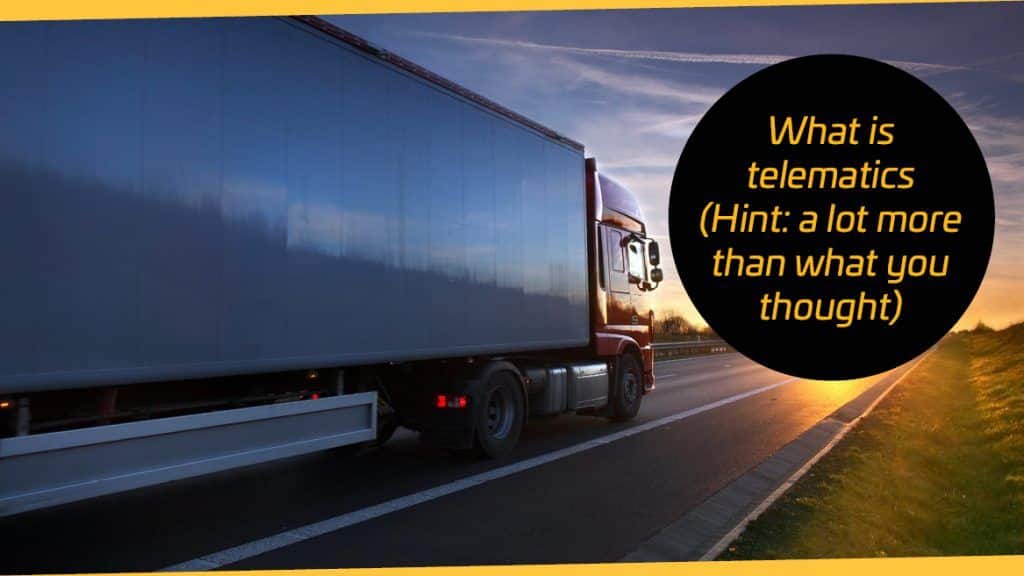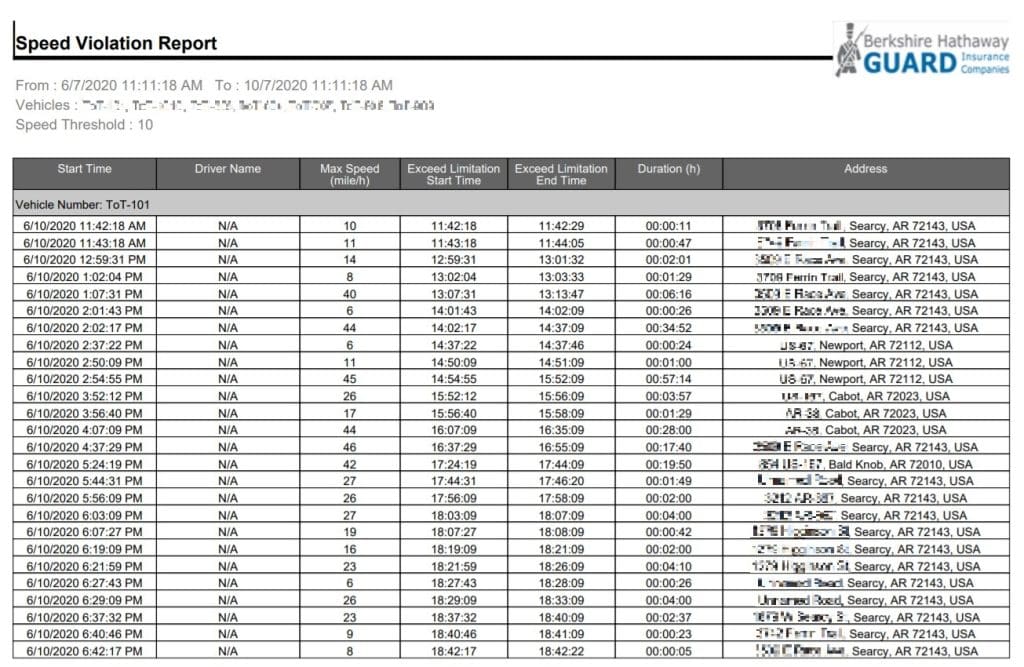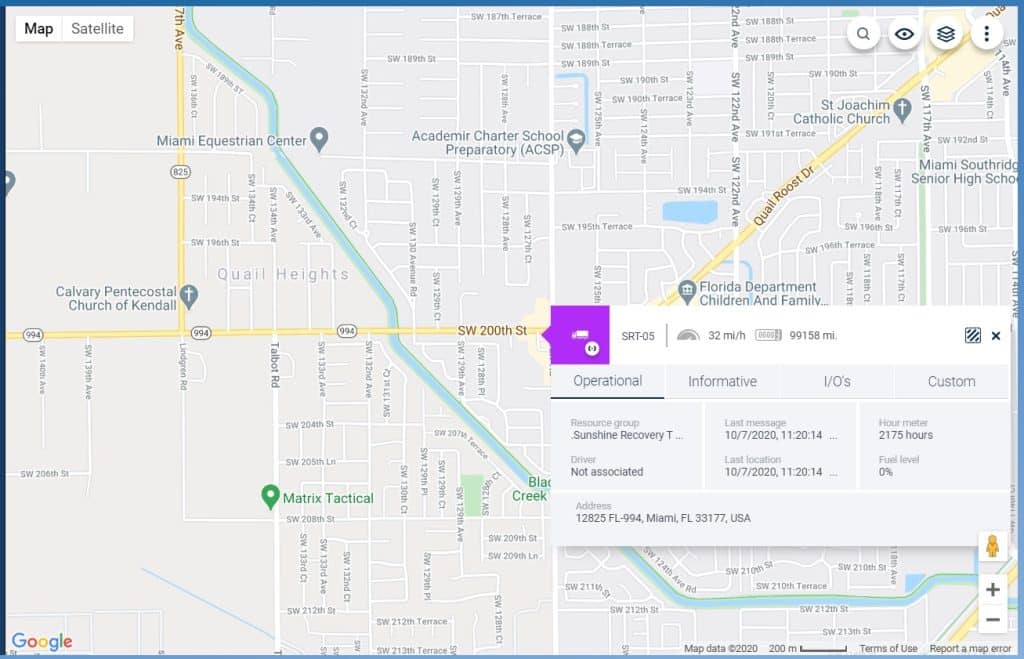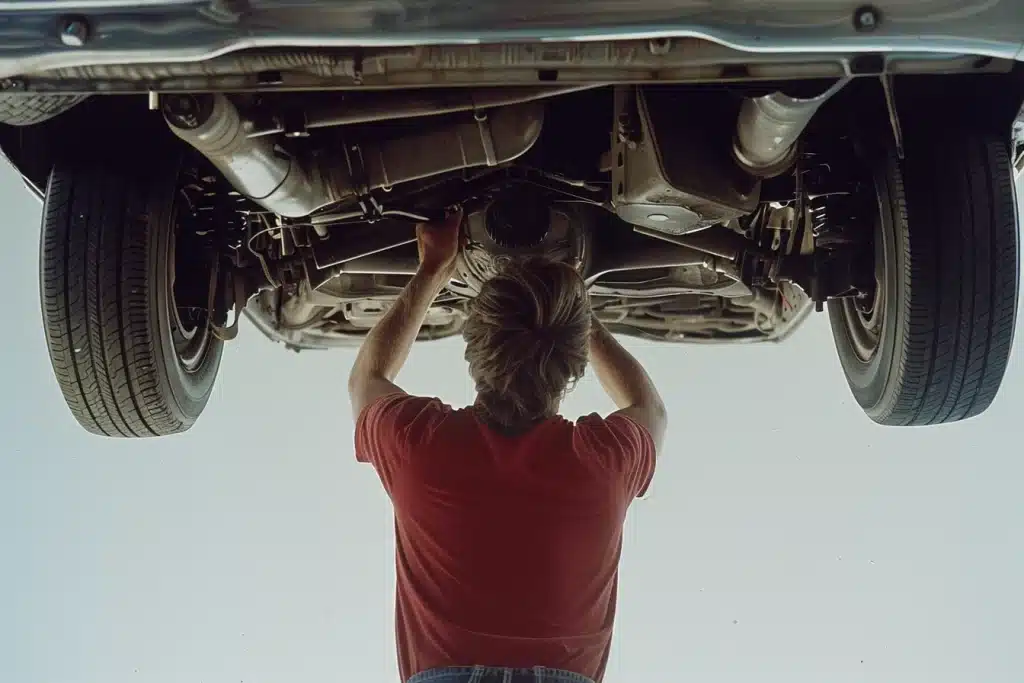
One of the technologies that make a fleet manager’s life easier is called ‘telematics’.
But what is telematics, exactly?
The word ‘telematics’ is based on the French word ‘télématique’, originally devised by Simon Nora and Alain Minc in 1978. They used it in their report on the computerization of society, presented to the French government.
This term was devised by combining two words that make it rather self-explanatory – ‘télécommunications’ and ‘informatique’, which means that telematics marries two seemingly different branches of technology:
- telecommunications – the transmission, emission, or reception of information by wire, radio, optical, and other electromagnetic systems
- informatics – information processing, i.e. the transformation of information through computational systems
Also, in Greek, ‘tele’ means ‘at a distance’ or ‘far off’, which nicely sums up one of its most important advantages – being able to transmit data remotely, regardless of the distance.
So in the most basic and broadest sense, telematics is the practice of transferring data remotely over large distances.
Telematics in Fleet Management
Telematics is a rather broad term for a technology that can be applied across a wide range of industries – construction, road transport, site excavation, and others. However, the area where telematics is now most commonly deployed is fleet management. This is why telematics is also known as ‘fleet telematics’.
In the fleet management industry specifically, telematics is the technology used by fleet managers to gather and monitor a wide range of data related to each unit in a fleet of vehicles.
In other words, telematics in fleet management is used to help you in remote management of vehicles, provide a bird’s view perspective over your fleet, and offer various information about it.
How Is Fleet Telematics Carried Out?
Vehicle telematics systems collect all relevant telematics data such as the location of each of your vehicles, their speed and idling, the state of its engine, fuel efficiency, driver behavior, and other important details. This information is visually accessible through a fleet management software platform.
To gather all this data, vehicle telematics systems rely on:
- A telematics device
- GPS fleet tracking
- Vehicle diagnostics
The information gathered from these three sources is stored on the cloud (as is the case with Safe Drive Systems), from where you can access it on a computer or mobile device via one comprehensive dashboard.
Thanks to this fleet management software, you can keep up with each vehicle’s location and condition, as well as gain insights into problematic driving behavior, fuel usage, and accident events. From there on, you can generate customized reports and make informed decisions.
A telematics device
Installed inside the vehicle as part of a telematics system, a telematics device is an instrument that detects and records things such as the vehicle’s speed, position, the distance it has driven, how much fuel it has used, as well as driver behavior including how quickly and aggressively they brake, how fast they drive, if they’re idling, and other driving information.
It consists of:
- An engine interface unit – an input/output computer that gathers multiple analog signals and translates them into digital format
- An input/output interface (expander port) – enables communication between a computer and a human or another device
- An accelerometer – a tool measuring acceleration force
- A buzzer – which is an audio signalling device
Telematics devices are often installed in the vehicle’s on-board diagnostics port (OBD II Port), which you’ll find in every vehicle manufactured since 1996. It is usually located under the steering wheel, making it quite a practical spot for easy installation and access.
These devices are often used by insurance companies and in courts to exonerate the driver or prove their guilt in case of an accident. They can also alert the driver if he or she is braking too hard or driving too fast. Either way, a telematics device will send all relevant data to the provided dashboard.

GPS fleet tracking
Originally designed in the 1960s and initially intended for military and intelligence purposes, Global Positioning System (GPS) consists of a network of satellites orbiting our planet at fixed points and transmitting signals to anyone with a GPS tracking device.
The beginning of the GPS deployment in vehicle tracking dates back to the 1980s but it wasn’t until 1993 that this system became available to civilians and it was only in the 2000s that we actually saw it in commercial use. Quite a piece of history, isn’t it?
Hold on a sec – so telematics isn’t the same as GPS tracking?
No. These two terms are often used in the fleet management business as they’re interconnected and complement each other. However, they are not one and the same thing.
Specifically, GPS gathers real-time and precise data about your vehicle’s current location and status via a built-in GPS receiver, while telematics transmits that data through the cellular network and satellites to central computers where it is processed into the information you see in your fleet management dashboard.
As part of a larger telematics solution, GPS tracking can not only produce a wealth of vehicle performance data delivered directly to your fleet management platform but also allows you to assign specific geographical areas to your vehicles (aka. geofencing). This helps better organize their tasks, as well as letting you know if any of them exits their assigned area.
In this sense, the GPS is the main component of a telematics solution, and telematics provides the hardware and software that allows the information from the GPS to be efficiently applied.

Vehicle diagnostics
Most vehicles today come equipped with a diagnostic device, which records and alerts the driver about matters with the vehicle’s engine, transmission, oil tank, exhaust, throttle, ignition coils, and more.
Relying on the vehicles’ own diagnostic devices, telematics solutions can gather real-time information about these concerns and then deliver it straight to your dashboard, giving you a detailed picture of the vehicle’s overall condition, allowing you to plan for maintenance, purchase new vehicles, and more.
What Is the Importance of Fleet Telematics?
Deploying fleet telematics will benefit you and your entire fleet of vehicles in several important areas. It will help you:
- Increase your fleet’s efficiency and productivity
Having a good telematics platform that includes vehicle tracking means you’ll know where each of your vehicles is at every moment, where it’s been, where it’s headed, and what is its Estimated Time of Arrival (ETA). Telematics will also facilitate more effective communication with your drivers who can easily check in and report on their progress.
Access to this data will enable you to plan the most efficient routes and, consequently, expedite deliveries, as well as reduce vehicle wear and tear and fuel consumption. This will make the entire operation more streamlined, faster, and cheaper, allowing everyone (including you) to go home sooner and with fewer things on your mind.
- Stay on top of your vehicle maintenance needs
The right telematics solution will allow you to keep track of all things related to your fleet’s physical condition, be it the state of tires and brakes, poor driving practices, fuel consumption, as well as the last time each vehicle was serviced.
Having access to this information will not only make maintenance scheduling quicker and easier but will also allow you to anticipate and address any current maintenance needs and fuel purchases.
This way, you’ll be able to prevent problems such as piling up tasks and expenses before they spiral out of control and cause unnecessary downtime and delays, leading to a domino effect on your other responsibilities.

- Increase your drivers’ safety (and everyone else’s)
Fleet telematics technology provides a large body of data about matters that may affect the safety of your vehicles on the road, be it for your drivers or the wider public. For example, it will tell you whether your drivers are behaving properly on the road in terms of aggressive driving or if there’s anything wrong with any vehicle’s physical state (like the poor condition of the brakes or possible fuel leakage that can cause horrific accidents due to spills).
Knowing if there are such threats to driver safety will allow you to timely address these problems. This may include discussing inadequate driving habits with drivers and (re)training them or maintaining your vehicles in a good operating condition so that no physical problems affect their safety on the road.
As a bonus, being aware of where your vehicles are at any moment via location tracking will let you send emergency assistance exactly where it is needed if a situation arises that demands it.

- Minimize your fleet’s expenses
Inefficiency in fuel usage, maintenance scheduling, and routes taken can inflate your fleet’s expenses. Additionally, poor driving behavior may lead to crashes, downtime-related costs, repair expenses, not to mention the increased rates from insurance companies and court expenses.
Since your fleet’s budget is your responsibility, the information delivered through a telematics platform will help you bring down those expenses by:
- improving fuel efficiency
- preventing breakdowns and missed trips
- training your drivers for better driving habits to avoid wear and tear, hiking insurance rates and court fees
The future of Telematics
The wider availability and surge in Internet use in the mid-1990s led to telematics systems (still crude at the time) experiencing popularity as well. This was especially evident in the past decade in which their adoption accelerated immensely, developing into the modern solutions you can see now.
As you’ve seen above, telematics has developed to offer much more than just helping you track your vehicles. In today’s business climate and vast competition for work, companies that don’t leverage telematics to their advantage and streamline their operation will soon be bested by those who do, due to their higher efficiency, costs saving and overall better ability to manage their fleet. It is slowly becoming the new standard for running the entire fleet operation like a perfectly oiled machine.
But what is the future of telematics? Considering the constantly changing circumstances and the pace at which various technologies are developing, one thing is for certain – it will only continue to grow and evolve.
This growth is driven by a number of things:
- the practicality and convenience it provides to fleet managers
- the growing demand for goods being delivered at doorsteps
- the ever-increasing popularity of ride-hailing apps
- the rise of the Internet of Things (IoT) and autonomous vehicles
- the need for fleet management systems to go beyond the above and provide further needs
In many ways the future is already here
Most fleet management solutions out there offer you telematics alone, but in our case, it is just one cog (albeit an important one) in the larger, amplified fleet management wheel. Our unique combination includes:
- Telematics
- a radar-based collision prevention system
- real-time dash camera
- AI cloud data
- ELD (Electronic Logging Device)
All these elements work in perfect harmony to provide you with real-time visibility into your fleet’s operations, informing and alerting you about: poor driving behavior (like harsh braking and rapid acceleration), distracted driving, vehicle location and geofencing, fuel usage, driver scoring (ECO), ELD compliance, potential road hazards and other items, as well as accident events.
This one-of-a-kind integration creates a holistic solution to managing your fleet and its activities, empowering you with:
- real-time data (including events generated inside the vehicle)
- easy access from one place
- increased productivity and decreased time wasting
- direct impact on the bottom line (lower insurance costs, less downtime)
While it’s true that there are other platforms on the market offering decent fleet management solutions, not a single one of them is as comprehensive as Safe Drive Systems. With us, you don’t just get the reactive technology (telematics and dash camera), but we also empower you with proactive technology (radar-based collision system) that will reduce or even prevent dire situations from happening in the first place. Thanks to our all-encompassing, radar-based platform, you’ll get access to a truly unique set of data that no other telematics provider can produce, both in real-time and in retrospect.
Are you seeking to elevate your fleet management to an entirely new level, with a platform that offers much more information and convenience than just a mere telematics product? Schedule a free consultation with one of our advisors for a personalized analysis and a recommendation for a solution best suited for your fleet.




